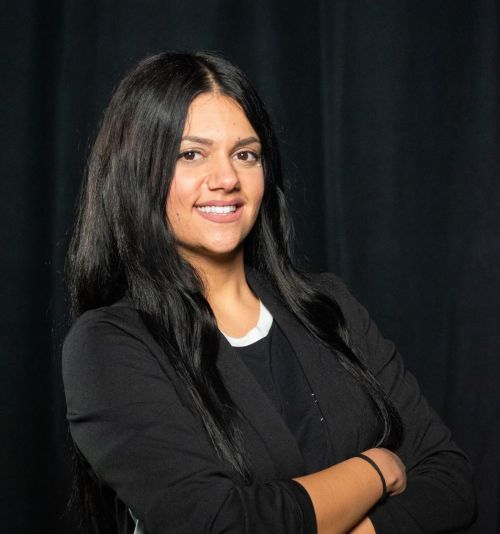The shocking and tragic ordeal of a 22-year-old man from Koropi in Attica continues to unfold, as he remains intubated in the intensive care unit (ICU) of Athens’ “Georgios Gennimatas” hospital following an online ‘challenge‘ – a supposed game in which he was dared to swallow an entire burger without chewing. The attempt resulted in prolonged cerebral hypoxia, and his life now hangs in the balance.
Koropi: How a 22-year-old ended up in ICU over a challenge – psychologists explain to parapolitika.gr
In today’s social and digital environment, personal “connection” takes on new forms and meanings, characterized not only by social interaction but also by online presence. Which form dominates? That’s the crucial question…
Young people shape their identity in a world where image precedes experience and the need for validation often replaces genuine contact. We witness this daily in our social and professional circles – it’s not unfamiliar to us. Social acceptance is increasingly measured through digital metrics like likes, comments, and views, which function as alternative measures of social recognition and personal worth.
Why they don’t “see” the danger
Psychologist Eleni Spyropoulou, who specializes in addiction treatment and coordinates the Day Center at “Iasis,” Iasis at Centro, explains to parapolitika.gr: “Online ‘challenges’ appear as ways of participation and exposure, as well as means of social connection. Research shows that such behaviors, which satisfy the need for acceptance and intensity, can share common elements with other forms of addiction, particularly in their continuous search for euphoria and reward.”
Eleni Spyropoulou adds and clarifies: “Every notification or positive comment activates the brain’s reward system, causing momentary pleasure that the individual seeks to experience again. Repeating this experience intensifies the recurring need to seek validation and can limit critical thinking ability, especially when combined with the risk that accompanies many of these challenges.”

But the threatening danger isn’t theoretical – it’s obvious. Doesn’t such a serious life-threatening risk serve as a deterrent for the subject, minor, or young person? Eleni Spyropoulou is clear and enlightening: “No, this doesn’t mean participants ignore the danger. They may often recognize it exists but emotionally underestimate it, carried away by the need for acceptance and the power of instant reward. Developmental research shows that during adolescence, the brain’s reward system matures earlier than the one regulating critical ability and self-control, making young people more vulnerable to behaviors offering intensity, risk, and social validation. Meanwhile, social media culture reinforces the need to define personal worth through others’ recognition. When this acceptance replaces internal self-esteem, dependence on external validation signals like likes, comments, and views strengthens external control mechanisms. Thus, mental well-being can be affected not only by the challenge itself but also by the constant search for acceptance as a source of emotional balance.”
Will our society continue to passively observe a practice that seems to deprive us of every tool for preventing this phenomenon and its associated dangers? With evident optimism, Eleni Spyropoulou addresses our reasonable concern: “Prevention isn’t achieved through fear or prohibition, but through dialogue, empathy, and education in self-observation. Understanding the deeper motivations behind every online behavior helps young people connect with awareness instead of simply seeking validation. The internet isn’t a threat but a reflection of how people relate to themselves and others. Perhaps, ultimately, the essential question isn’t how much acceptance one receives, but how much connection one experiences with themselves when seeking it.”
The “antidote” in the social media era
From a different, though not opposing perspective, counseling psychologist and psychotherapist Glykeria Apostolopoulou approaches our questions, stating characteristically to parapolitika.gr: “If we view the issue more holistically, signs of our times include the ephemeral, the disposable, and acceptance calculated by ‘likes,’ views, and comments on social media platforms. Simultaneously, when discussing adolescents and young adults, we cannot overlook the biological and psychological needs of this developmental period. Brain centers related to the desire for acceptance, attention, and validation become particularly sensitive, while those related to self-regulation and self-control haven’t fully developed yet. Combined, there’s the natural need to search for and build their identity, as well as strengthen their sense of belonging. Beyond adolescence, researchers now also discuss the period of emerging adulthood, describing the age range from 18 to 25 or even up to 29 years, characterized by intense desire for personal exploration, experimentation, and emotional instability.”

Glykeria Apostolopoulou also focuses on the family’s role and emotionally supportive social environment, explaining: “The role of family and significant ‘others’ is crucial. When young people receive unconditional acceptance, genuine interest, love, and open communication from their environment, they strengthen their self-esteem and don’t seek their worth on social media. Otherwise, young people will search for their identity and value elsewhere, often endangering their physical and mental health. Young people with a secure and stable reference framework are more psychologically protected and have less need to seek dangerous forms of recognition. This might be the ‘antidote’ to the challenges of the social media era.”
What is cerebral hypoxia that affected the 22-year-old?
Cerebral hypoxia is the condition where the brain doesn’t receive adequate oxygen, critically affecting brain function and potentially leading to cellular death.
Cerebral hypoxia can affect the entire brain or be focal, affecting only one brain region. It results from various conditions including cardiac arrest, drowning, respiratory failure, or stroke.




